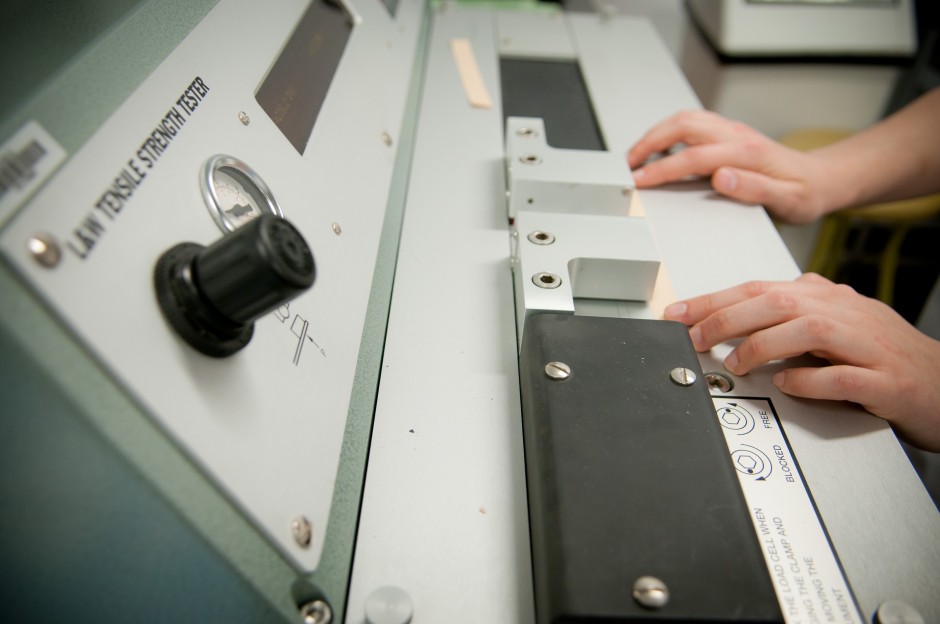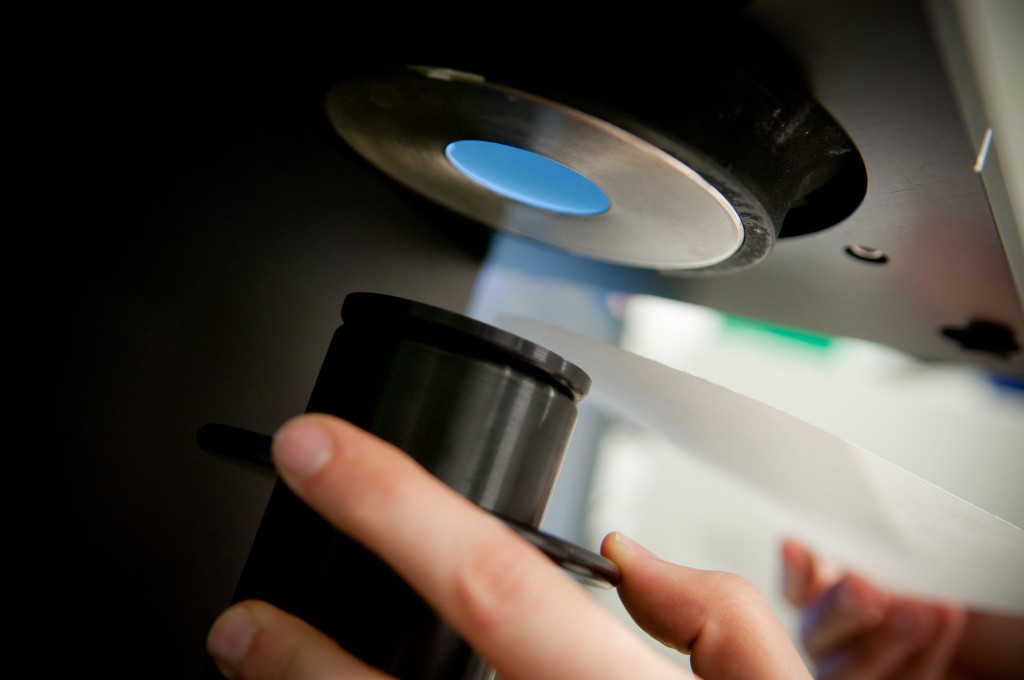
The Constant Temperature and Humidity (CTH) Lab is an extension of the Wet Lab and is used primarily for the testing of pulp in its dry form; typically in the form of handsheets. The CTH Lab is sealed and maintained at a constant temperature of 23°C (+/- 2°C) and at a constant humidity of 50% (+/- 2%) according to PAPTAC Standard A.4; a standard approved by the Physical and Chemical Standards Committee, Technical Section, Canadian Pulp and Paper Association.
The lab is equipped with an array of instruments suited to testing a variety of qualities pertaining to handsheets:
The Mullen Burst Tester has an air powered clamp, an inflatable diaphragm which ruptures the sheet, and a pressure meter to gauge the amount of load required to rupture the sheet of paper. It is capable of testing from a sheet of paper to 2 ply corrugated board. The Burst Tester’s setup is based on TAPPI Method T 403.
The L&W Tensile Tester is used to test the amount of force and work required to pull or snap a sample of paper apart. It also reveals details like strength, the elastic qualities of the paper, the stiffness of the sheet as well as breaking length. It is capable of testing both dry and wet samples. The L&W Tensile Tester’s setup is based on TAPPI Method T 494. The Lab also contains a Pulmac Zero-Span Tensile Tester based on TAPPI Method T 231.
The Elmendorf Tear Tester is used to measure the sheer force required to tear a sheet of paper. It is based on TAPPI Method T 414.
The L&W Micro Calliper measures the mean thickness of paper. It measures up to 5 sheets at a time and provides a statistical report which includes such data as the minimum thickness (mm), the maximum thickness (mm), the mean thickness (mm), the standard deviation (µm), the coefficient variability (%), as well as each individual measurement taken (mm).
The Technidyne ColorTouch PC measures brightness, whiteness and opacity amongst other things and provides a statistical analysis of the obtained data. Samples can be measured with up to four different light sources as well as special fluorescent lighting for accurate whiteness measurements.
